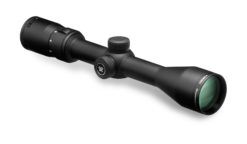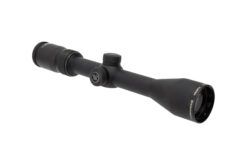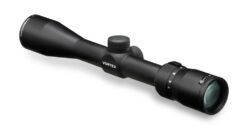Optics
Vortex Diamondback Optics: Frequently Asked Questions
The Vortex Diamondback series stands as a cornerstone of Vortex Optics’ 2025 lineup, offering a perfect blend of enhanced clarity, rugged durability, and accessibility for hunters, competitive shooters, and outdoor observers. Renowned for delivering mid-range performance that punches above its class, the Diamondback series includes riflescopes and binoculars designed to provide exceptional optical quality and reliability without overwhelming complexity. Whether you’re tracking game at dawn, engaging targets at long range, or glassing distant landscapes, Diamondback optics deliver the precision and value that make them a favorite among shooters and observers. This FAQ dives deep into the most common questions about Vortex Diamondback riflescopes and binoculars, providing detailed, verified answers to help you maximize your experience with these versatile optics.
Frequently Asked Questions about Vortex Diamondback
What is the difference between First Focal Plane (FFP) and Second Focal Plane (SFP) in Diamondback riflescopes?
First Focal Plane (FFP) and Second Focal Plane (SFP) refer to the position of the reticle within the scope. In FFP Diamondback scopes, like the Diamondback Tactical 6-24×50 FFP, the reticle is placed in front of the magnification lens, so it scales with the image as you zoom. This ensures holdover points and ranging references remain accurate at any magnification, making FFP ideal for long-range shooting where precise calculations are critical. In SFP scopes, such as some Crossfire II models, the reticle is behind the magnification lens and stays the same size regardless of zoom. SFP reticles are simpler for quick target acquisition at fixed magnifications but require adjustments for holdovers at different zoom levels. Diamondback FFP scopes are preferred for tactical and long-range applications, while SFP options suit hunters needing consistent reticle size for close to medium ranges.
How do I properly zero my Diamondback riflescope?
Zeroing a Diamondback riflescope involves aligning the point of aim with the point of impact at a specific distance, typically 100 yards for rifles. Start by mounting the scope securely (see mounting question below). Bore-sight the rifle to align the scope roughly with the barrel’s point of aim, using a bore-sighting tool or visual alignment. At the range, fire a three-shot group at your chosen distance, aiming at the bullseye. Measure the distance between the group’s center and the bullseye, then adjust the windage (horizontal) and elevation (vertical) turrets accordingly. Most Diamondback scopes, like the 4-12×40, use 1/4 MOA clicks, so four clicks move the point of impact one inch at 100 yards. Fire another group, refine adjustments, and repeat until the shots consistently hit the bullseye. Ensure the rifle is stable, use a rest, and account for environmental factors like wind. Consult the user manual for model-specific turret details.
What is the eye relief on Vortex Diamondback riflescopes, and is it sufficient for high-recoil rifles?
Eye relief on Vortex Diamondback riflescopes typically ranges from 3.1 to 4 inches, depending on the model. For example, the Diamondback 4-12×40 offers approximately 3.1-3.4 inches, while the Vortex Diamondback Tactical 6-24×50 FFP provides around 3.9 inches. This generous eye relief ensures a safe distance between your eye and the scope, critical for high-recoil rifles like .308, .30-06, or magnum calibers. The extended eye relief minimizes the risk of scope bite (the scope hitting your face during recoil) and allows comfortable positioning, even for shooters wearing glasses. For heavy-recoil applications, proper mounting and cheek weld are essential to maintain consistent eye relief, making Diamondback scopes a reliable choice for powerful rifles used in hunting or tactical scenarios.
How do I adjust the diopter on Vortex Diamondback HD binoculars?
The diopter adjustment on Vortex Diamondback HD binoculars, such as the 10×42 or 12×50 models, fine-tunes focus to compensate for differences between your eyes. Located on the right eyepiece, the diopter ring adjusts the focus for the right barrel independently. To set it, cover the right objective lens (or close your right eye) and focus the binoculars on a distant object using the center focus knob, ensuring the left eye sees a sharp image. Then, cover the left objective lens (or close your left eye) and rotate the diopter ring until the right eye sees the same object sharply, without touching the center focus. Once set, note the diopter position for future use. This adjustment ensures both eyes view clearly, critical for prolonged observation during hunting or wildlife viewing. Refer to the Diamondback HD manual for model-specific instructions.
Are Diamondback optics compatible with night vision or thermal devices?
Vortex Diamondback riflescopes, like the 6-24×50 FFP, are not specifically designed for night vision or thermal compatibility, unlike some high-end tactical scopes with dedicated IR illuminator settings. However, they can be used with clip-on night vision or thermal devices that attach to the rifle’s rail in front of the scope, provided the device is compatible with the scope’s objective lens size and magnification range. The multi-coated lenses and high light transmission of Diamondback scopes enhance low-light performance, which can complement night vision setups for dusk or dawn hunting. Diamondback HD binoculars are not night vision compatible but offer excellent low-light performance due to their HD glass and coatings, suitable for early morning or late evening observation. For dedicated night vision use, consult Vortex for specialized optics or third-party device compatibility.
What is the difference between MOA and MRAD reticles in Vortex Diamondback scopes?
MOA (Minute of Angle) and MRAD (Milliradian) reticles in Diamondback scopes, such as the Diamondback Tactical series, refer to angular measurement systems for reticle subtensions and turret adjustments. MOA reticles, like the EBR-2C MOA in the 6-24×50 FFP, use increments of approximately 1 inch per 100 yards (1.047 inches precisely), with 1/4 MOA click adjustments moving the point of impact 0.25 inches at 100 yards. MRAD reticles, like the EBR-2C MRAD, use milliradians, where 1 MRAD equals 3.6 inches at 100 yards, with 0.1 MRAD clicks moving the point of impact 0.36 inches at 100 yards. MOA is more intuitive for shooters familiar with inches and yards, common in hunting, while MRAD is preferred for tactical and long-range shooting due to its metric compatibility and finer adjustments. Both systems are effective; choose based on your familiarity and shooting style.
What accessories are included with Vortex Diamondback scopes and binoculars?
Vortex Diamondback riflescopes, such as the 4-12×40 or 6-24×50 FFP, typically include a lens cloth, lens caps, a sunshade (for select models), and a user manual. Some models, like the Diamondback Tactical series, may include a bubble level or throw lever for quick magnification adjustments, though these vary by specific configuration. Vortex Diamondback HD binoculars, like the 10×42 or 12×50, come with a carrying case, neck strap, tethered objective lens covers, rainguard eyepiece cover, lens cloth, and user manual. A GlassPak harness is sometimes included for select models, enhancing portability for field use. Vortex also offers optional accessories like tripod adapters for binoculars or scope rings for riflescopes, available separately. Check the product packaging or VortexOptics.com for model-specific inclusions.
How do I mount a Vortex Diamondback riflescope properly?
Mounting a Vortex Diamondback riflescope requires precision to ensure accuracy and durability. Select scope rings or a mount compatible with your rifle’s rail (Picatinny or Weaver) and the scope’s tube diameter (1-inch or 30mm, depending on the model, e.g., 30mm for the 6-24×50 FFP). Secure the base to the rifle, torquing screws to the manufacturer’s specifications (typically 15-25 in-lbs). Place the scope in the rings, aligning it for proper eye relief (3.1-4 inches for Diamondback models). Level the scope using a bubble level on the turret or reticle, ensuring the crosshair is plumb. Tighten the ring screws incrementally, alternating sides, to 15-18 in-lbs (or per ring manufacturer specs) to avoid pinching the tube. Check for reticle cant and adjust as needed. Bore-sight and zero at the range to confirm alignment. Use a torque wrench for consistency and consult the user manual for model-specific guidance.
What is the VIP Warranty, and what does it cover?
The Vortex VIP (Very Important Promise) Warranty is an unlimited, transferable lifetime guarantee covering all Diamondback optics, including riflescopes and binoculars. It protects against defects in materials or workmanship and accidental damage, such as drops, water exposure, or impact, regardless of fault or ownership. No receipt or registration is required, and Vortex repairs or replaces the product at no cost. The warranty is fully transferable, adding value to used optics. Exclusions include loss, theft, or intentional damage, though Vortex often goes beyond expectations to resolve issues. This industry-leading warranty ensures lifelong confidence, making Diamondback optics a trusted investment for shooters and observers.
Can I use Diamondback binoculars with eyeglasses?
Yes, Diamondback HD binoculars, such as the 10×42 or 12×50, are designed for use with eyeglasses. They feature adjustable eyecups that twist up or down to set the correct eye relief, typically 15-17mm, ensuring the full field of view is visible for eyeglass wearers. To use, twist the eyecups down fully, place the binoculars against your glasses, and adjust the center focus and diopter for clarity. The generous eye relief accommodates most prescriptions, making Diamondback binoculars comfortable for extended observation during hunting or wildlife viewing. If the field of view seems restricted, ensure proper eyecup positioning and interpupillary distance adjustment (see IPD question below).
How do I clean the lenses on my Diamondback optics?
Cleaning Diamondback optics requires care to avoid scratching the multi-coated lenses. Start by removing loose dirt or debris with a lens brush or compressed air to prevent abrasions. Apply a small amount of lens cleaning solution (provided by Vortex or a reputable brand) to a microfiber lens cloth—never directly to the lens. Gently wipe the lens in a circular motion, starting from the center and moving outward, using a clean section of the cloth for each pass. For stubborn smudges, repeat with a fresh cloth and solution. Dry the lens with a dry microfiber cloth if needed. Avoid using household cleaners, paper towels, or clothing, as they can damage coatings. Store optics with lens caps on to minimize cleaning needs. Refer to the user manual for additional care tips.
What is the interpupillary distance (IPD), and how do I adjust it on Diamondback binoculars?
Interpupillary distance (IPD) is the distance between the centers of your pupils, typically 55-75mm, which varies by individual. Proper IPD adjustment on Diamondback HD binoculars aligns the optical barrels with your eyes for a single, clear image. To adjust, hold the binoculars to your eyes and pivot the barrels at the hinge (usually located near the center focus knob) until the two image circles merge into one. Note the IPD scale (if present) on the hinge for future reference. For example, on the Diamondback 10×42, adjust until the view is comfortable without black edges or strain. Correct IPD enhances comfort and clarity during prolonged use, such as hunting or birdwatching. Recheck periodically, as eye fatigue can affect perception.
Are Diamondback scopes suitable for long-range shooting?
Yes, Diamondback scopes, particularly the Diamondback Tactical 6-24×50 FFP, are well-suited for long-range shooting. The first focal plane reticle ensures consistent holdover and ranging at any magnification, critical for distances beyond 500 yards. The 6-24x magnification range, precise 1/4 MOA or 0.1 MRAD adjustments, and clear glass with multi-coated lenses provide the accuracy and clarity needed for engaging targets at extended ranges, such as in precision rifle competitions or varmint hunting. The scope’s 30mm tube and durable construction handle recoil from calibers like .308 or 6.5 Creedmoor. For extreme long-range (1,000+ yards), the Viper or Razor series may offer additional features, but Diamondback Tactical models deliver exceptional performance for mid-range budgets.
How do I understand and use the reticle in Diamondback Tactical scopes?
Diamondback Tactical scopes, like the 6-24×50 FFP, feature reticles such as the EBR-2C (MOA or MRAD), designed for long-range precision. The reticle includes hash marks for windage and elevation holdovers, allowing shooters to compensate for bullet drop and wind drift without turret adjustments. To use, zero the scope at a known distance (e.g., 100 yards). Refer to the reticle manual (available at VortexOptics.com) for subtension measurements—e.g., in the EBR-2C MOA, hash marks may represent 2 MOA increments. Use ballistic data for your cartridge to estimate holdovers (e.g., a .308 may drop 36 inches at 400 yards, requiring a 9 MOA hold). Practice at the range to confirm holds, and use the reticle’s ranging features to estimate target distance if needed. Familiarity with your rifle’s ballistics and reticle subtensions enhances accuracy in dynamic scenarios.
What is veiling glare in binoculars, and how can I minimize it?
Veiling glare is a loss of contrast in binoculars caused by stray light scattering within the optical system, often noticeable in bright conditions or when viewing against backlit scenes (e.g., sunrise). Diamondback HD binoculars, with their multi-coated lenses and dielectric prism coatings, minimize veiling glare, but it can still occur. To reduce it, use the included sunshade or lens hood (if available), position yourself to avoid direct sunlight on the objective lenses, or angle the binoculars slightly to redirect stray light. Ensure lenses are clean, as smudges exacerbate glare. If glare persists, it may indicate an issue with lens coatings or internal reflections, warranting a warranty check. These steps enhance clarity during observation, critical for spotting game or details in bright environments.
How do I know if my Diamondback scope is defective or needs service?
Signs of a defective Diamondback scope include blurry or distorted images, reticle cant or drift, inconsistent turret tracking (shots not aligning with adjustments), or failure to hold zero. For binoculars, look for double vision, focus issues, or damaged lens coatings. First, verify proper setup: check mounting, zeroing, diopter, and IPD adjustments, and ensure lenses are clean. Test under different conditions to rule out user error or environmental factors. If issues persist, contact Vortex customer service via VortexOptics.com or (800) 426-0048. The VIP Warranty covers defects and accidental damage, and Vortex will assess, repair, or replace the optic at no cost. Provide a detailed description of the issue to expedite service, and retain original packaging for shipping.
Can I purchase replacement parts or accessories for my Diamondback optics?
Yes, Vortex offers replacement parts and accessories for Diamondback optics through VortexOptics.com or authorized dealers. Common replacements include lens caps, eyecups, sunshades, and mounting rings for scopes, and objective covers, rainguards, or harnesses for binoculars. Contact Vortex customer service to confirm availability for your model (e.g., Diamondback 4-12×40 or 10×42 HD). Some parts, like lens cloths or basic covers, may be provided free under the VIP Warranty if damaged. For discontinued models, Vortex may offer compatible alternatives. Third-party retailers like OpticsPlanet.com also stock Vortex accessories, but verify compatibility. If a part is damaged, the VIP Warranty may cover replacement during repair, streamlining the process.
What is the weight and size of Diamondback binoculars, and are they suitable for travel?
Diamondback HD binoculars vary by model: the 10×42 weighs approximately 21.3 oz and measures 5.7 x 5.1 inches, while the 12×50 weighs about 28.1 oz and measures 6.6 x 5.5 inches. Their compact, lightweight design makes them highly suitable for travel, fitting easily into backpacks or carry-ons for hunting, hiking, or wildlife observation. The included carrying case and neck strap enhance portability, and the durable chassis withstands travel rigors. For extended trips, consider a GlassPak harness (included with some models or sold separately) to distribute weight comfortably. Compared to bulkier premium binoculars, Diamondback HD models balance portability and performance, ideal for mobile observers seeking clarity without added bulk.
How do I register my Diamondback product for warranty service?
The Vortex VIP Warranty does not require registration, as it’s automatic and transferable for all Diamondback optics. Simply retain proof of purchase (optional) for reference, though it’s not needed for service. If service is required, contact Vortex via VortexOptics.com or (800) 426-0048, describe the issue, and follow instructions for shipping the optic to their service center. Vortex handles repairs or replacements at no cost under the warranty, covering defects or accidental damage. To streamline future communication, you can create an account on VortexOptics.com to track service requests, but this is not mandatory. The no-registration policy simplifies the process, ensuring quick resolution for shooters and observers.
Where can I find the user manual for my Diamondback optics?
User manuals for Diamondback optics are available on VortexOptics.com under the “Support” or “Product Manuals” section. Search by model (e.g., Diamondback 6-24×50 FFP or 10×42 HD) to download a PDF version. Manuals provide detailed instructions on setup, zeroing, diopter adjustment, reticle use, and maintenance. If the manual isn’t listed, contact Vortex customer service at (800) 426-0048 or [email protected], and they can provide a digital or physical copy. Some manuals are included with the product packaging, so check the box or carrying case. Third-party retailers might also host manuals for specific models. Always reference the manual for model-specific guidance to ensure optimal performance.
Recommended Products at AR15Discounts
Looking to buy? Explore the best-selling Vortex Diamondback models on our site:
- Diamondback Tactical 6-24x50mm
- Diamondback 4-12×40
- Diamondback HD 10×42 Binoculars
- Diamondback Spotting Scope
- Diamondback Tactical 4-16×44





